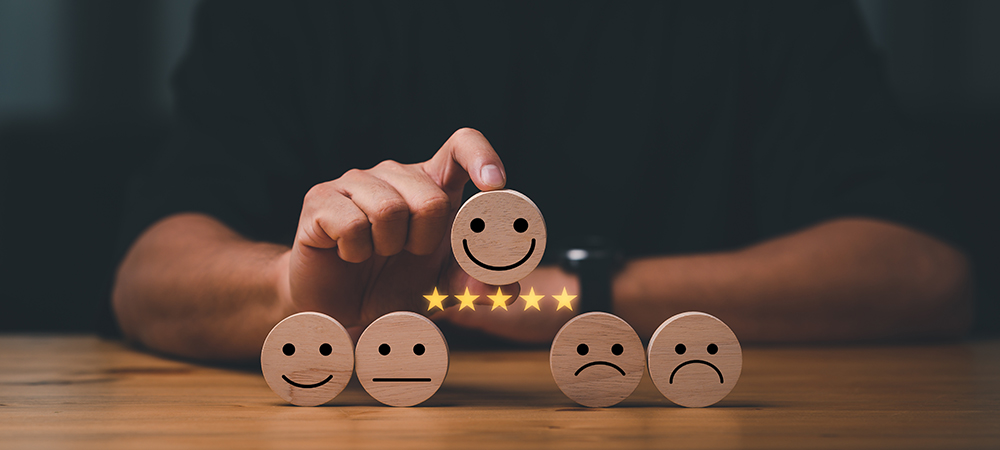Customer retention is becoming increasingly difficult as brands compete against each other. Ganga Ganapathi, VP Head – Marketing and Client Success, Epsilon APAC & MEA, EU provides further insight into where customers’ loyalties lie in 2022.
Loyalty. A word that evokes emotion and brings to mind relationships where one is willing to go to great lengths to keep the other happy. Loyalty cannot be bought or sold with points, freebies and discounts alone, but needs to transcend the altar of emotions.
With COVID-19 and all its challenges came intense competition for a share of the customer’s heart and mind. As Digital Transformation leapfrogged across businesses, marketers gained access to a treasure trove of data. And customers began to consolidate their brand affinities to interact with fewer stores, delivery services and loyalty cards.
So how do we now redefine and reinvent our relationships with increasingly discerning customers?
Brands that truly understand their customers are intuitive to customers’ aspirations, motivations and barriers. Mapping these intangibles to technology brings alive the entire customer journey, experience and channels. Finding a platform partner who delivers strategy as well as the tech platform to anticipate a consumer’s needs, activate to deliver on those needs and finally measure and optimise to ensure proof of performance is key.
According to research by ResearchAndMarkets.com, the APAC loyalty management market is expected to reach US$3642.77 million by 2026, registering a CAGR of 25.1%, from 2021 to 2026. The report found that increasing customer retention boosts profit margins and also brings stability to revenues. And while necessary and important must always be weighed against the typical marketing priority of acquisition which is 25% more expensive than retaining current customers.
Brands that are agile and can anticipate customer needs are better able to build a culture of customer loyalty, enabling them to be the ones who will come out stronger and more successful.
Three key loyalty trends that will shape 2022
When building or reimagining a loyalty marketing programme, there are three imperatives to ensure that your brand continues being an engagement magnet for your most important customers.
Building empathy and human connections
Customers who feel an emotional connection to a brand are far more valuable.
While the pandemic has forced brands and their customers to be physically apart for health and safety reasons and to turn to more digital interactions, those that have been able to humanise their brands and create emotional connections with their customers have been able to garner even greater customer loyalty and ride out the wave of economic uncertainty.
Loyalty programmes are a proxy for customers to connect with the brand. If brands can provide flexibility and compassion to customers as well as generosity and goodwill, they will find that customers will be more willing to engage with them, especially since customers are providing companies with personal data which allows brands to establish and nurture a more intimate relationship with their customers.
Bolstering belief-driven buyers
As consumers become more socially and politically engaged, brands have an opportunity to build loyalty with their customers. 2021 saw a rise of belief-driven buyers where customers now ‘vote’ with their wallets which will continue well into this year.
Brands that take a stand for their values such as sustainability, recycling or ethical trading, can harness a loyal customer case as consumers feel a sense of pride associating with brands that do this.
With the needs of non-profit organisations skyrocketing in part accelerated by the COVID-19 crisis, a Mintel report found that 46% of consumers surveyed would like the option to donate their points or benefits to charities or others in need. This is even higher for Gen Zs and Millennials, with an average of 60% in agreement.
Companies that set up programmes where customers can earn points for what they purchase or where brands donate to certain causes which are near and dear to the heart of their customers, can help a brand to build a loyal customer base.
Programmes such as these are a testament to how building customer loyalty can benefit a brand if the right causes and mechanics are put in place.
The rise of gamification
More brands will use gamification this year to make their loyalty programmes more attractive and relevant to their customers.
Gamification elevates the personalisation experience, providing consumers with incentives to purchase more frequently, buy more or use loyalty points for rewards. It plays off many aspects of human psychology including reward-seeking behaviour, natural competitiveness and the classic fear of missing out (FOMO).
A Mintel Trends Report saw that as money became tighter for consumers with the ongoing pandemic, Brands took to gamifying the discount process to provide consumers with a sense of control over their spending, as well as being a fun and playful way to engage with them. Tying the discount or value proposition up with the key message of the campaign can reinforce that message while simultaneously providing value to the consumer.
Gamification not only increases a brand’s share of wallet but also its share of life among its customers.
Nike developed the Nike Run Club app, which tracks a user’s runs with data ranging from exercise duration up to the wear of their trainers, has been successful at this. Through the app, Nike collects data about users’ chosen sports, activity levels, and preferred styles, using that data to personalise experiences. Nike’s app uses a range of gamification features such as milestone unlocks, reward systems, and leader boards. In 2020, Nike reported that its app saw download growth of over 45%, compared to the average global increase of 10%.
Customer loyalty has never been more important than in today’s digital landscape where it is the key to cultivating repeat purchases and engagement. In the long run, this sets us up for mutual success, and what could be better than an environment where brands and consumers thrive, because of their relationship with each other.
Click below to share this article


